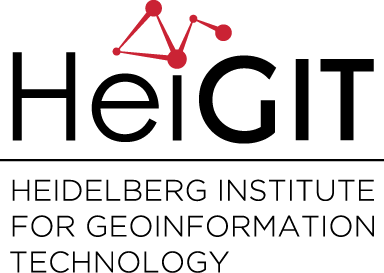Category: OSM
-
Exploring the Missing Maps Project – Tasking Manager statistics
The HOT Tasking Manager is the tool where most of the work of the Missing Maps community and members happens. The projects created tell us a lot about the current mapping efforts and also show where we already succesfully mapped basic infrastructures like roads and human settlements. Tools like OSMatrix or OSM Analytics try to…
-
Maptember in Brussels – GIScience Research Group at the HOT summit, SOTM 2016 and Missing Maps Meeting
Brussels became the global center for OpenStreetMap enthusiasts, humanitarians and researchers during the last week. The 2nd HOT Summit was held on the 22nd September and was complemented by a Missing Maps Mapathon in the evening. From 23rd – 25th September the State of the Map conference opened their doors for the global OpenStreetMap community.…
-
LandSense Kick-Off Meeting – EU Citizen Science Observatory on Landuse
this week sees the Kick-Off Meeting of a new EU Horizon 2020 project called LandSense at International Institute for Applied Systems Analysis (IASA) Laxemburg Austria. The overall aim of the LandSense project is to build an innovative citizen observatory in the field of LandUse LandCover (LULC), which collects data both actively (through citizens) and passively…
-
OpenFloodRiskMap Online combines Critical Infrastructure from OSM with Emergency Routing
some time ago we deployed OpenFloodRiskMap (OFRM) at http://ofrm.geog.uni-heidelberg.de/ OpenFloodRiskMap (OFRM) is a prototype web application to assist decision makers in developing alarm and operation plans for flood risk management. The OFRM hereby provides support in accessing critical infrastructure (CI) information in the OpenStreetMap (OSM) data base and to furthermore add this information to an…
-
A Monitoring Tool for OpenStreetMap Mapathons in Python
In the last couple of weeks disastermappers Heidelberg and GIScience members were interested in finding a way to monitor changes in the OpenStreetMap database. This could help to provide better feedback after mapathons and could allow to measure how many objects like buildings or roads were created or modified during a mapathon. (It was even…
-
A review of volunteered geographic information quality assessment methods
While Volunteered Geographic Information (VGI) is gaining more and more popularity and VGI datasets are being used in various projects, there are always concerns about the quality of them. During the past years several studies have been performed regarding VGI quality assessment by employing different methods/approaches. However, if one needs to evaluate the quality of…
-
OpenRouteService 3.3 is going Mobile – Routing in the Americas, Gradients and more!
In our latest release we have primarily focused on optimising and stabilising the backend and on adding new elements to provide an improved user experience throughout the OpenRouteService 3.3 based on OpenStreetMap data. After many requests from our community, we for starters can happily announce that we have made the service responsive for your mobile smartphones.…
-
A Two-Tiered Approach to OSM Data collection for Novice Users & Personalizing Walkability
In addition to the two earlier presentations (No 1, No 2), today there are two additional presentations (No 3 & 4) by GIScience Heidelberg at AGILE 2016 conference in Helsinki: Rousell, A., Hahmann, S., Mobasheri, A. (2016): A Two-Tiered Approach to OSM Data collection for Novice Users. 19th AGILE Conference on Geographic Information Science. Helsinki,…
-
Deriving incline values for street networks from voluntarily collected GPS traces
When producing optimal routes through an environment, considering the incline of surfaces can be of great benefit in a number of use cases. For instance, incline may be considered when computing the most energy-efficient routes for electric cars and bicycles. Likewise, pedestrians with restricted mobility (such as wheelchair users, parents with pushchairs, and the elderly)…


